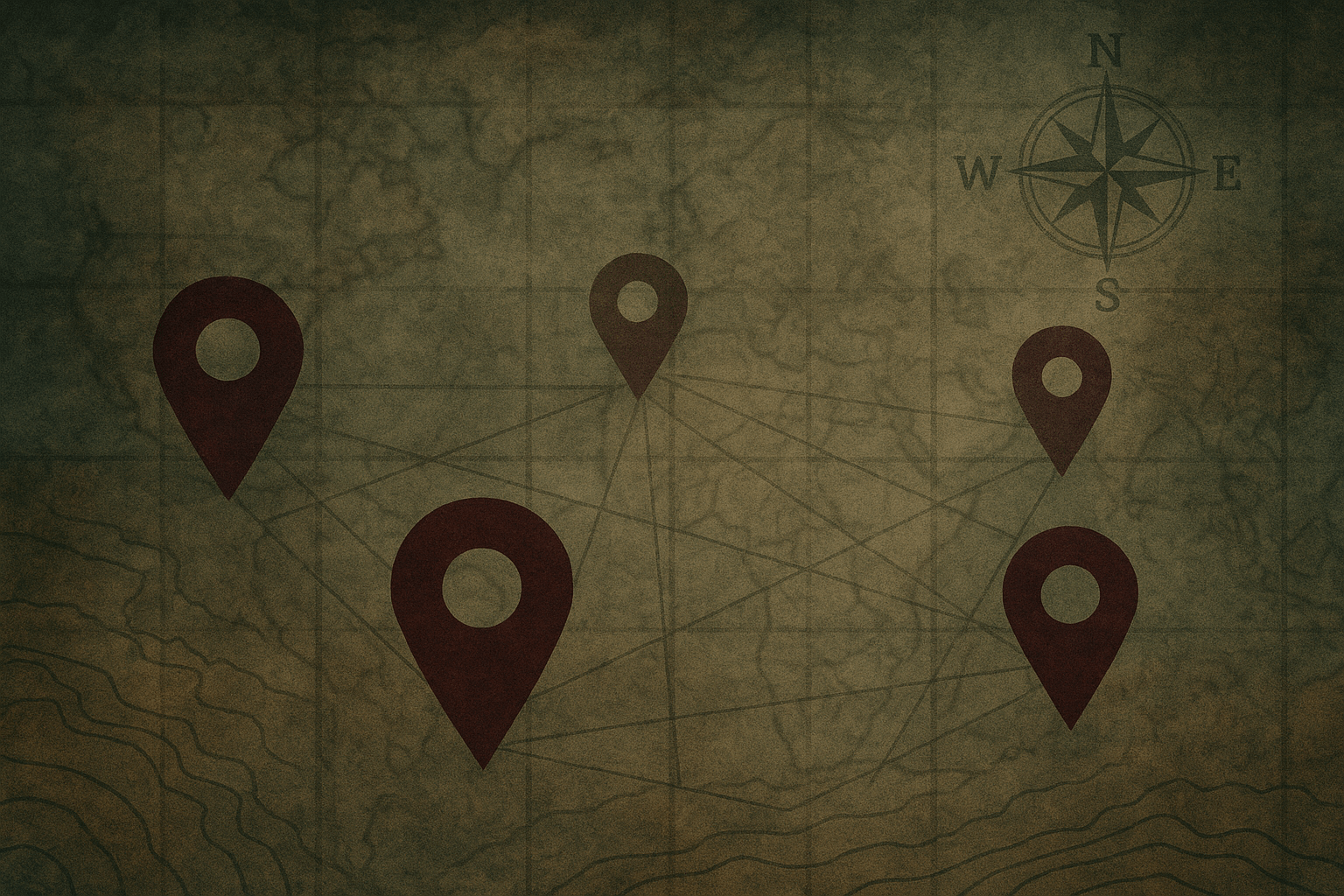The term, also known as “thanatourism” (from thanatos, the Greek personification of death), describes travel to sites associated with tragedy. It’s a phenomenon that forces us to ask a difficult question: why are we, in an age of unprecedented comfort and connection, so drawn to the planet’s darkest corners? The answer lies not just in psychology, but in geography—in the powerful, tangible connection between place and event.
Mapping the Spectrum of Sorrow
Dark tourism isn’t a single category; it’s a spectrum. On one end, you might find a museum exhibit about the Titanic. On the other, you find yourself standing on the very ground where unspeakable acts occurred. The geography of these sites is vast, spanning continents and climates, but they can often be grouped by the nature of their tragedy.
Landscapes of Genocide and Atrocity
Perhaps the most profound dark tourism sites are those consecrated by mass violence. Auschwitz-Birkenau in Oświęcim, Poland, is the archetypal example. It is more than a museum; it is a preserved geographical space—a sprawling complex of barracks, fences, and rail lines that serves as a horrific, physical testament to the Holocaust. Visitors walk the same paths as prisoners, entering the gas chambers and seeing the crematoria. The sheer scale of the camp, a scar on the Polish landscape, communicates the industrial nature of the genocide in a way no book or film ever could.
Thousands of miles away, the geography tells a different, yet equally devastating story. In Cambodia, the Tuol Sleng Genocide Museum in Phnom Penh (a former school-turned-prison) and the Choeung Ek Genocidal Center (the “Killing Fields”) mark the key urban and rural locations of the Khmer Rouge’s reign of terror. Choeung Ek, with its memorial stupa filled with skulls, is a chilling testament etched into the Cambodian soil, its mass graves a permanent and terrible feature of the local topography.
Geographies of Conflict and Division
War leaves indelible marks on the landscape, creating destinations born from conflict. The Korean Demilitarized Zone (DMZ) is one of the most unique tourism sites on Earth. This 250-kilometer-long, 4-kilometer-wide buffer zone is a geopolitical anomaly—a ribbon of land that is simultaneously a nature preserve teeming with wildlife and one of the most heavily militarized borders in the world. Tourists are brought to the Joint Security Area (JSA), where they can physically step into North Korea inside a conference room, standing on a line that represents one of the planet’s most intractable frozen conflicts.
Similarly, cities like Sarajevo in Bosnia and Herzegovina offer “war tours” that map the brutal siege of the 1990s. Guides, often survivors themselves, lead visitors along Sniper Alley, to the site of market massacres, and through the “Tunnel of Hope”—a subterranean passage that was the city’s lifeline. Here, human geography is paramount; the tour is a narrative overlaid onto the urban environment, turning streets and buildings into chapters of a tragic story.
Disaster Zones: Scars of Nature and Technology
Some of the most compelling dark tourism sites are places where tragedy was sudden and overwhelming. Chernobyl in Ukraine has become a global phenomenon. The 30km Exclusion Zone is a unique geographical entity—a ghost-scape frozen in 1986. Pripyat, the city built for plant workers, is being slowly reclaimed by nature. Concrete apartment blocks are being fractured by trees, and the iconic Ferris wheel rusts in a silent amusement park. The disaster’s physical geography is key to the experience: the lingering radiation, the abandoned city, and the vast, eerie wilderness create an atmosphere of post-apocalyptic dread and wonder.
Likewise, the ancient Roman cities of Pompeii and Herculaneum in Italy are perhaps the original dark tourism sites. Buried by the eruption of Mount Vesuvius in 79 AD, they offer an unparalleled, albeit morbid, glimpse into daily life frozen at the moment of catastrophe. The volcano, a looming feature of the physical geography, is both the creator and destroyer of the site’s appeal.
The Ethical Compass: Voyeurism vs. Witnessing
The rise of dark tourism maps a complex ethical terrain. When does remembrance become entertainment? When does pilgrimage become voyeurism? The commodification of tragedy is a real concern. The infamous “Auschwitz selfie” is a stark example of a visitor failing to grasp the gravity of the space they occupy.
However, the geography itself often provides a counter-argument. These places exist. The events happened *here*. To erase them from the map would be a disservice to memory. For local communities, tourism can be a vital economic lifeline and a way to ensure their stories are not forgotten. The key lies in management and motivation. A well-curated site like the 9/11 Memorial & Museum in New York City uses its physical location—the very footprint of the fallen towers—to foster reflection and education, not spectacle.
The motivation of the tourist is the final, crucial coordinate on this ethical map. Are you going to Chernobyl because you saw a cool TV show, or are you going to bear witness to the consequences of human error and the awesome, terrifying power of the atom? Are you visiting the Killing Fields for a morbid thrill, or to understand the depths of human cruelty and the resilience of a nation that survived it?
Ultimately, dark tourism is a profound exploration of human geography. It reveals how tragedy shapes our landscapes, our cities, and our collective memory. It challenges us to engage with history not as an abstract concept, but as a physical reality etched into the Earth’s surface. It asks us not just *where* we go, but *how* we go, and *why* it matters.
